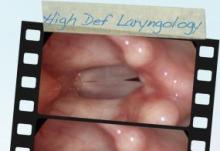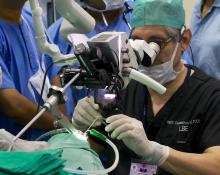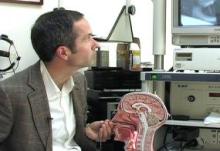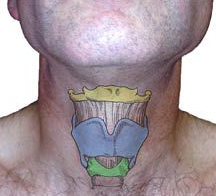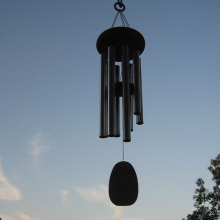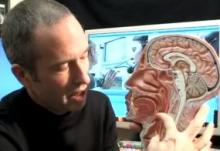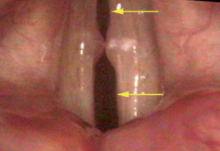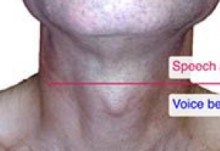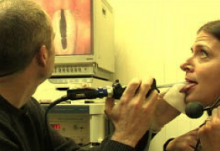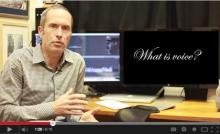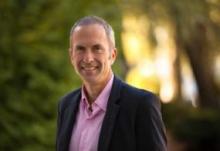We just wrapped up the excellent 3rd meeting of the Combined European OtoRhinoLaryngological Society (CEORL) in the city of Prague, Czech Republic. CEORL 2015.
My presentation at the 3rd CEORL conference in Prague, Czech Republicon 8 June 2015. It details my thoughts on how the combination of high technology and low technology, when merged, lead to a high definition examination of the larynx.
Attending “AOICON 10th South Zone & 32nd Karnataka State Annual Conference 2014” in Bangalore, October 10-12, 2014 as faculty, the meeting is fascinating for many interesting ideas. In particular, the internal approach to repositioning of the arytenoid by Paul Castellanos opened my eyes to a new method of laryngeal framework surgery. Paul’s idea for altering the larynx consists of entering the vocal cord by a microlaryngeal incision through the aryepiglottic fold - false cord junction.
There is a practical course on functional diagnosis of voice disorders coming up in Barcelona, Spain - Voice Course Barcelona. The speakers are a great group of presenters! Ferran Ferran Vilà, ENT and phonosurgeon. Barcelona (Course director) Cori Casanova, Phoniatrician. Barcelona (Course director) Bruno Coulombeau, Phoniatrician. Lyon Romain Perouse, ENT and phonosurgeon. Lyon Markus Hess, ENT, phonosurgeon and phoniatrician. Hamburg Nieto, P. Phoniatrician. Valencia Dalmau, J. ENT and phonosurgeon.
Sounds like a great neurolaryngology conference put on by the Neurolaryngolgy Study Group, coming up at the American Laryngological Association Meeting on Wednesday May 14 at 5 pm by Jean-Paul Marie on laryngeal reinnervation surgery. The topic: "Ten years experience in selective bilateral reinnervation of the larynx." It will be at Ceasar's Palace, in room Roman I/III, the same room as the ALA meeting at COSM that afternoon.
This is an abstract I have submitted for the Fall Voice Conference in San Antonio, Texas.
During an examination, people hate to be embarrassed--they naturally and fairly immediately try to compensate for any hoarseness. It is fortunate that there is redundancy in the vocal system so compensation is usually available to maintain sound production even when there is a problem. However, for the examiner, compensation tends to hide a voice disorder, both audibly as well as visually. Some common instances hidden by compensation include mucosal disorders on the edge of the vocal cord or weakness from neurologic and muscular disorders.
Sipping espresso in Ken’s Boulangerie & Cafe, I hear the background noise of the espresso grinder mingling with the murmur of voices. The couple next to me are chatting in Japanese, drinking coffee and downing a pastry. I don’t understand a word, but I can hear that each person’s voice box, or more technically the larynx, is functioning well.
I have a set of wind chimes hanging from an arbor that catch my attention whenever I am out in the garden and the breeze kicks up. They were given to me by Mrs. Mary Marlboro’s niece. Mary had purchased them while in hospice with instructions for her niece to give them to me after she passed on. I had cared for Mary for several years after I removed her larynx because of a cancer.
Even if you are willing to faithfully believe in your surgeon’s technical skills (based on his description to you of his own technical prowess), how can you assess his diagnostic skills and his error rate, when even he cannot?
Faith N. Metsan showed up at Dr. Goodew’s office saying she was hoarse. Like Faith, most of us have a general idea about hoarseness, though perhaps without really knowing what it is in any detail. A performer often knows when her voice is not working well because the change is sudden. She has thousands of hours hearing her own voice for comparison. Yet, singers and performers stake their entire careers on their voice and many have never seen nor had any concrete visual concept of what was transpiring inside their necks.
Mr. Heim Stillear, at 70-years-old, seems older and less intelligent to his family, since he was hospitalized for a stroke about two months ago. They come to the appointment with him and help him into the exam chair. When I ask Heim what is going on with him, the long pause before his strained answer begins makes his family uncomfortable. His daughter interjects, “We are having a very difficult time understanding him.”
If you are hoarse, almost certainly you will benefit from a video recording of your vocal cords. Most vocal events happen too fast for you to perceive, without some capability to slow and review the images of a video recording. Even video needs some help from a stroboscope or high-speed recording to catch events well.
Faith N. Metsan felt something begin to change in her throat one autumn afternoon. Over the next few hours, her voice just seemed to disappear. She didn’t have any other symptoms. By evening, when she tried to speak, her voice was nothing more than a whisper. Thinking this was just the beginning of laryngitis, and because work was busy, she waited for a week. When she didn’t seem to be getting better she called her primary care physician, Dr. Marcus Goodew, and made an appointment.
Physicians who specialize in voice are known around the world by various names: laryngologist, phonosurgeon, voice doctor, phoniatrist and there are probably others. Essentially these words mean that the person has a special interest in the voice beyond what a general doctor has; beyond even what a typical ear, nose and throat physician has. They are focused to some degree on the voice. There is not a formal degree for a laryngologist and anyone may use the name. Quite likely, over time the training for this subspecialty will become more formalized.


